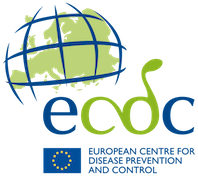5th Food- and Waterborne Diseases and Zoonoses Programme Network Meeting
The FWD network meeting on the 19 April 2013 paid attention to sharing information and assessing the potential impacts of the new diagnostic techniques in the FWD field, with a special focus on culture-independent methods, on microbiological typing methodologies and their application for surveillance and early outbreak detection, and FWD surveillance report outputs.
Executive Summary
On 19 of April 2013, epidemiologists and laboratory experts from across the EU working on food- and waterborne diseases and zoonoses (FWD) met in Uppsala, Sweden, for the 5th Annual Meeting of the European Food- and Waterborne Diseases and Zoonoses Network (FWD-Net) in Europe. This meeting followed the 2nd joint meeting of the FWD network and EFSA Task Force on Zoonoses data collection on the 18th of April 2013. Fifty-one delegates from 25 EU/EEA countries participated as well as 13 non-EU network members. As in previous meetings, there were representatives of important stakeholders such as the World Health Organization (WHO), the Centers for Disease Control and Prevention (CDC) as well as invited speakers.
The meeting was organised in two plenary sessions with four invited speakers each, and one parallel session combining invited presentations and working groups on laboratory- and epidemiology-related topics respectively.
The first plenary session was focused on surveillance and culture-independent methods. The invited speakers provided a good overview on latest developments on culture-independent diagnostics (CID) and specifically of the whole-genome sequencing approach (WGS), as well as on country-specific experiences from Sweden and the United Kingdom. Emphasis was put on the rapid development and roll-out of CID. These nucleic acid-based culture-independent diagnostic tests allow for simultaneous detection of multiple bacterial, viral, and parasitic diarrheal disease agents. They are cost-efficient, offer fast results, require relatively unskilled labour, and may have high sensitivity, specificity, and predictive values, hence acceptance by the laboratory community may be rapid. However, CID tests pose the greatest threat to programs that depend on the availability of microbial isolates produced during the culture process. Affected surveillance includes antimicrobial resistance (AMR) monitoring, and subtype-based outbreak detection, investigation, and microbiological attribution programs. Approaches for mitigating impacts of CIDs include: 1) developing culture independent methods that combine pathogen detection and characterisation (subtype, virulence, AMR) using currently available technology such as PCR and sequencing, and (2) working towards the use of advanced culture-independent technologies such as metagenomics. The foundation for metagenomics is laid by the whole genome sequencing approach (WGS). This technique is rapidly becoming a practical tool for outbreak investigations, although at present it shares with Pulsed field gel electrophoresis (PFGE) and Multiple-Locus Variable number tandem repeat Analysis (MLVA) a dependency on isolates.
The laboratory session focused on the results of the first round of the EQA programme for typing of Salmonella , verotoxin-producing Escherichia coli VTEC and Listeria , and discussions on the molecular typing and revision of the methods to be used in future surveillance. Presented EQA results for molecular typing were encouraging. For the majority of the identified technical issues an acceptable quality is within reach by optimisation of procedures in laboratories, trouble-shooting assistance, and training. The MLVA method was proposed to be adapted for the use for S. Enteritidis as well. ECDC will support individual training activities and visits to laboratories with expertise in a specific typing method.
The epidemiology session focused on ECDC surveillance outputs. According to attendees feedback, the Annual Epidemiological Report and the EU Summary Report on Zoonoses were consulted at least once by the wide majority (>70%) of participants; while the EU Summary Report on Antimicrobial Resistance and the Quarterly Reports for salmonellosis and VTEC infections were only accessed by some 20% of the participants. The Surveillance Dashboard prototype was received very positively by the attendees and was flagged for further developments. Suggestions for web version of the reports were also given to allow for faster publication.
The third session focused on outbreaks and emerging threats and was composed of four presentations. A live demo of the new FWD EPIS platform was presented and well received by the participants. The standard operating procedures (SOPs) for management of molecular typing clusters were presented. The last two presentations focused on epidemiology of monophasic Salmonella Typhimurium in the EU/EEA area as well as the investigation of a nosocomial outbreak of S. Typhimurium in South Africa.
The meeting provided opportunities to discuss the current status of FWD surveillance and outbreak-related activities at the EU level as well as for exchanging experiences and strengthening international collaboration between different partners in the surveillance, control and prevention of FWD in Europe. It also provided valuable feedback to ECDC in its work on developing further molecular surveillance and surveillance outputs.




